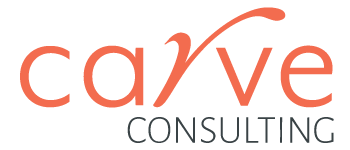A dilemma we are regularly asked is “how do I showcase my experience when I have so much experience?” Your resume, along with your LinkedIn profile, can be considered your personal marketing collateral. Just like when marketing a product, your personal collateral needs to communicate the value and key features you can bring to a potential employer. If your resume reads more like a complete career history, then it may be time for a review.
Here’s some key aspects to consider
How many years to include
The main body of your resume should not go further back than 10 – 15 years. If you have different or complimentary experience that adds credibility to your current experience, such as lecturing in your specialisation, you can list this in a separate section at the end of your resume under a heading Lecturing or Earlier Career History. Be mindful, experience prior to 10 years ago will not be perceived as current within the same technological, economic or cultural environment.
Length
This one differs between countries so there is a great deal of conflicting advice. For the Australian market, we recommend no longer than 3 to 4 pages. One way to contain the length is to not include a list of responsibilities but instead, under each position, include a statement that covers the objective of the role. To demonstrate your experience use key achievements. Use succinct and industry relevant language to provide the context of your achievements and commercial outcomes. If your resume still seems too long, a common habit is to use lots of adjectives in key achievements. Keep it factual and leave the colourful descriptives for the interview.
Front page
The front page is a showcase of the most important aspects of your experience for the target role. It may include a mix of name, contact details, short career objective, education, memberships, key capabilities, key highlights, career history, tech experience. Choose the ones that will connect most to the requirements of the role. This career objective and key highlights section can be used to draw attention to experience from different periods of your career.
Layout
Resumes are like fashion, it changes and we all make judgements as to which decade it belongs to. A resume is the same. We have become more visually critical, so ensure the layout and colour palette reflect you professionally and in a way that’s relevant to your industry.
Keywords
Whether your application is going to be scanned by an ATS (Application Tracking System) or employer, they are looking for the same thing – keywords! The focus is less on the job title as it once was as each company and industry use different terminology. Keywords will relate to naming industry sectors, recognised competencies, and accountabilities for that role. Don’t get lost in the nuanced detail, ensure your resume reflects the keywords used in a job advertisement or the way people in the industry would describe the role.
Getting to the next stage
Employers are making a quick assessment of what experience you have and where you have done it. The quicker you can showcase that, the more likely they will read further. If you’ve had a period of family care, sabbatical or career change, include those periods to remove any doubts. A standard linear career path will be some employers expectation, but it is definitely not the norm. If your career path has taken a few turns, showcase the common skills or how the combination of skills enhances your capability.
Get some help
There are many free resume templates available online if you are not comfortable to create something yourself. Also, ask family or friends for feedback on how you’re presenting your experience. Writing a resume is a skill in itself and there are so many opinions. If you are finding it challenging and would like some professional help, please get in touch.

